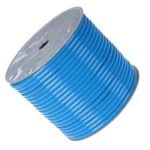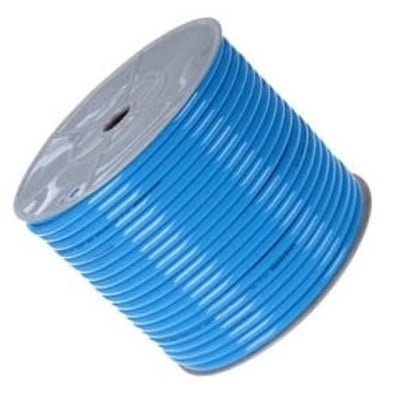Description
Pneumatic Pipe: A Guide to 12mm Diameter Pipes
Pneumatic pipes are crucial components in pneumatic systems, facilitating the transfer of compressed air or gas to power various mechanical operations. Among the commonly used sizes, the 12mm diameter pipe stands out for its versatility and capacity. In this guide, we will explore the features, applications, and considerations related to 12mm pneumatic pipes.
Applications of 12mm Pneumatic Pipes:
Industrial Automation: Pneumatic systems play a vital role in industrial automation, powering pneumatic cylinders, actuators, and control valves. The 12mm pneumatic pipe is commonly used to supply compressed air to various pneumatic components in automated machinery, assembly lines, and robotic systems.
Pneumatic Tools: Pneumatic tools, such as impact wrenches, air drills, and pneumatic screwdrivers, rely on compressed air for their operation. The 12mm pneumatic pipe provides the necessary air supply to these tools, ensuring reliable and efficient performance in applications such as construction, manufacturing, and maintenance.
Pneumatic Control Systems: Pneumatic control systems, found in industries such as HVAC, process control, and instrumentation, require precise and responsive air supply. The 12mm pneumatic pipe is commonly utilized to connect control valves, pressure regulators, and pneumatic actuators, ensuring accurate control and reliable operation.
Considerations for 12mm Pneumatic Pipes:
Pressure Rating: Consider the maximum operating pressure of the 12mm pneumatic pipe to ensure it can withstand the required pressure without compromising safety or performance. Different materials and wall thicknesses have varying pressure ratings, so consulting the manufacturer’s specifications is crucial.
Compatibility: Ensure that the chosen 12mm pneumatic pipe is compatible with the fittings, connectors, and valves used in your pneumatic system. Proper compatibility ensures secure and leak-free connections, optimizing system performance and reliability.
Installation and Routing: Pay attention to proper installation techniques to ensure the integrity and efficiency of the pneumatic system. Avoid excessive bending, sharp turns, or kinks that may restrict airflow or cause pressure drops. Using suitable brackets or clips can provide support and prevent damage to the pipe.
Maintenance: Regular inspection and maintenance of pneumatic pipes are essential for identifying signs of wear, leaks, or blockages. Timely maintenance helps prevent system failures and downtime and ensures the longevity of the pipes.


